Ryokan 101: What It Is, Rates, and How It Differs from Hotels

Ryokan, or traditional Japanese inns, are one type of accommodation travelers should try. With tatami rooms, exquisite food, yukata robes, and onsen, a ryokan is a great way to experience uniquely Japanese lodging. In this article, we introduce what to expect, along with prices and tips on manners.
Spend the Night at Ryokan to Encounter Traditional Lifestyle

Picture from Arima Onsen Day Trip -Top 3 Recommended Hot Springs
Ryokan are a traditional style of Japanese hotel. They are often in buildings with a lot of history and commonly found in popular onsen towns, like Hakone and Arima.
With their classic Japanese style, they are ideal for travelers who want to experience something unique. This article provides a basic guide to staying at ryokan, from the cost each night to manners to make your stay as comfortable as possible.
Table of Contents
1. Average Room Prices
2. Experience Traditional Style Japanese Rooms
3. The Seasonal Aesthetic of the Tokonoma
4. Low Tables and Zaisu Chairs
5. Futon in Ryokan
6. Receive Japanese Hospitality
7. Relax in Yukata
8. Savor Local Cuisine
9. Manners and Things to Know When Staying at a Ryokan
10. Stay at an Onsen Ryokan to Enjoy Hot Springs!
10 Ryokan from Popular Onsen Towns
1. Sekizenkan Kashotei Sanso
2. Gora Kadan
3. Atami Izusan Karaku
4. Atami Sekitei
5. Nishimuraya Honkan
6. Ginka
7. Hana Beppu
8. Kannawaen
9. Gekkoju Yufuin
10. Yufuin Gettouan
Average Room Prices
The average cost for one night at a ryokan is roughly 15,000 yen per person. Costs can reach upwards of 50,000 yen per night for high-class ryokans or those that established during the Meiji Period. However, there are many reasonably priced ryokans as well, so please choose according to your budget.
Ryokan typically cost more than business hotels in Japan, but they offer first-rate service and delicious meals, creating a relaxing experience for guests. We make reservations on Booking.com, which has a category for ryokan, allowing you to search and find specifically traditional inns.
What Exactly is a Ryokan?
Experience Traditional Style Japanese Rooms

Picture courtesy of Ginzanso
The rooms are different from an average hotel room. Equipped with tatami, classic sliding doors, and toko no ma, ryokan give you the chance to experience staying in a traditional Japanese room.
In a ryokan, it's customary to remove not only your shoes but also any indoor slippers when walking on tatami mats. Tatami is a delicate and easily damaged material made from soft rush grass. By walking barefoot or in socks, you can fully appreciate the unique texture and fragrance of the tatami. Historically, tatami has been regarded as a sacred space, and maintaining cleanliness is of utmost importance. Therefore, removing your footwear to protect the tatami and keep it clean is considered good manners.
The Seasonal Aesthetic of the Tokonoma
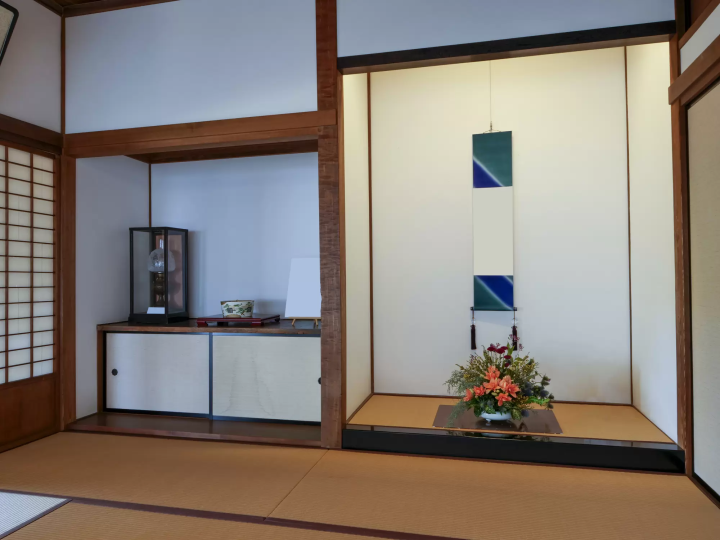
Photo by Pixta
The tokonoma is an essential space in a traditional Japanese room that expresses the beauty of the room and the changing seasons.
The scrolls and flowers displayed in the tokonoma change with the seasons. For example, cherry blossoms or plum blossoms may be featured in spring, while motifs of bamboo or water may symbolize coolness in summer. In autumn, you might see displays of colorful leaves, and in winter, pine or plum branches are often showcased. This seasonal decoration allows guests to experience the charm of each season, offering a fresh perspective every time they visit.
Low Tables and Zaisu Chairs
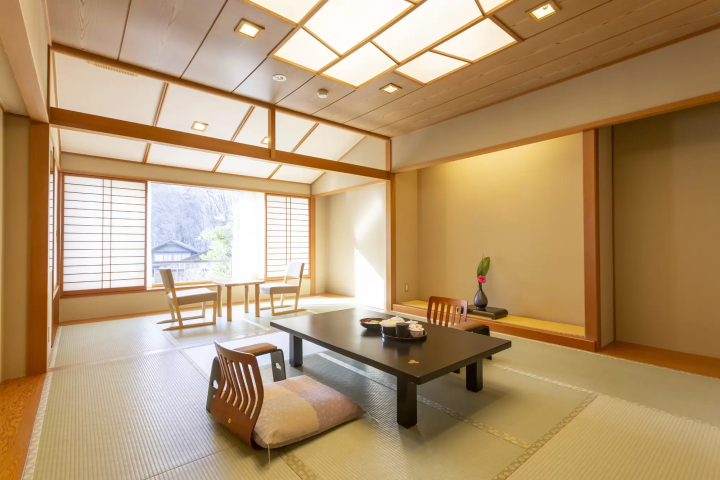
Photo by Pixta
In the guest rooms of ryokans, you will traditionally find low tables (known as chabudai or zataku) and zaisu chairs. The chabudai is designed for sitting directly on the tatami, allowing you to stretch your legs comfortably while enjoying meals or tea.
Zaisu are chairs without legs but with a backrest, enabling you to relax with your legs extended on the tatami. These pieces of furniture are designed low to preserve the spaciousness of the room and symbolize traditional Japanese living. When sitting in a zaisu, it is considered polite to sit up straight, though you can relax freely in more casual situations.
Futon in Ryokan

The sleeping style is also Japanese. Most rooms are equipped with futon mattresses you can lay on the tatami floors to sleep on. Certain ryokan also have beds, so if you wish to sleep in one, please check when you make a reservation.
Rooms are also equipped with TVs, power sockets, and kettles for a comfortable stay. However, some ryokans are in very rural areas and may not have Wi-Fi connection in some cases. Please check the lodging's official website before staying in order to avoid any inconvenience.
Receive Japanese Hospitality

Photo by Pixta
At a Ryokan, the okami is the head proprietress, responsible for managing the overall operation and ensuring guest satisfaction.
The staff (called nakai in Japanese) at ryokan communicate actively with customers to accommodate their needs. They are responsible for guiding guests to their rooms, serving meals, and preparing futons. The nakai pay careful attention to ensure guests have a comfortable stay.
After dinner or once you've finished bathing, it is common for the nakai to prepare the futons for sleeping. While the futons are being set up, you can either move to the living space or enjoy the onsen during this time, which is typical. You don't need to lay out or put away the futons yourself, as this is part of the hospitality provided by a ryokan.
Relax in Yukata

Photo by Pixta
Instead of regular loungewear or pajamas, you will find yukata available at ryokans. Unlike pajamas, however, you can wear your yukata while taking a stroll around the local area or when going for dinner. Rules for yukata vary depending on where you are staying, so if you are concerned check with the ryokan staff.

Picture from Meet The Snow Monkeys At Shibu Onsen, Nagano! Access, Inns And More (Picture courtesy of Nagano Tourism Association)
When visiting an onsen town in Japan, you will find areas lined with hot spring establishments, restaurants, and souvenir shops. Put on your yukata and explore the onsen district.
Savor Local Cuisine

Basic lodging plans at ryokan include a two-meal option. One of the best aspects of staying at a ryokan is exquisite meals. Dinner is called gozen* in Japanese. It includes an assortment of five to ten dishes made using local ingredients.
The food is served on an array of elegant dishes making it a feast for your eyes as well as your stomach.
*Gozen: an honorific word for a meal. Generally used to refer to a menu of five to ten high-quality dishes served at a traditional Japanese restaurant.
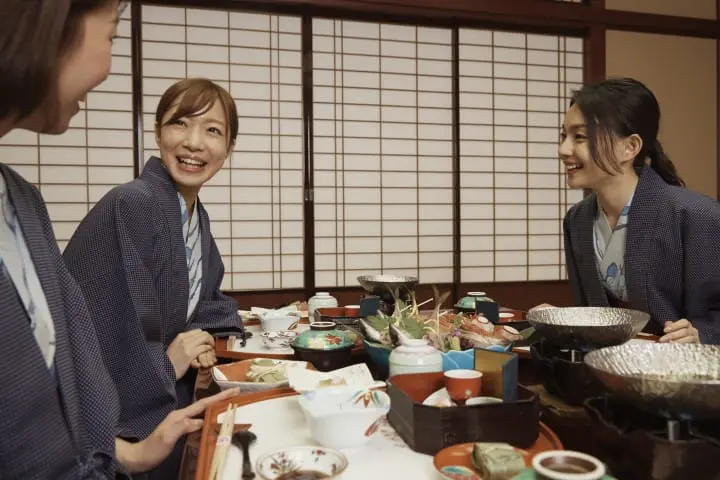
Photo by Pixta
Depending on the plan you have, the staff may bring the dishes to your room along with rice and tea.
It’s common for ryokan to serve a traditional Japanese breakfast of rice, miso soup, tsukemono, cooked fish, tamagoyaki (rolled omelet), and other side dishes. The staff usually serve each dish individually so you can leisurely enjoy your meal.
Manners and Things to Know When Staying at a Ryokan

Photo by Pixta
There are some rules and etiquette that are best to know about when staying at a Japanese ryokan.
1. Please Call Ahead if You are Running Late.
Depending on the lodging, the staff will be waiting at the reception at your expected arrival time, and or will have set preparations for your evening meal for that time. So if you are running late, it is always a good idea to let the ryokan know in advance.
2. Take Your Shoes Off At The Entrance.
Take your shoes at the ryokan entrance. There will be slippers available to wear instead of shoes. Please leave your footwear at the front and change into the slippers provided.
Read also
3. Take Care Where You Put Your Suitcase
Please take care if traveling with wheeled suitcases. Tatami mats can be easily damaged by suitcase wheels so avoid rolling them onto the tatami. Also, the area in the room known as toko no ma is considered a sacred space, so please refrain from placing suitcases there too.
Instead, place your luggage away from the toko no ma alcove or leave it near the entrance to the room. Again, if you are concerned about anything, don't hesitate to ask the staff.
4. Restrooms May Be Japanese Style
Western-style restrooms are common, but occasionally you may have a Japanese style toilet where you have to squat. In that case, it’s important to learn how to use one.
5. Check Your Room Before Leaving
When checking out from the ryokan, it’s good manners to do clean it lightly. Fold your yukata and make sure any wet towels are returned to the bathroom. The staff will tidy up the zabuton so it’s fine to leave them as they are.
Stay at an Onsen Ryokan to Enjoy Hot Springs!

Picture from Kusatsu Onsen Guide: Hot Springs, Things To Do, And Access From Tokyo (Picture courtesy of Kusatsu Onsen Boun)
When staying at an onsen ryokan you can enjoy hot springs indoors and rotemburo (outdoor baths). Toiletries such as shampoo, conditioner, body soap, razors, and hair-dryers are provided so you need not worry about bringing your own. Towels are provided in your room.
Hot Spring and Bath Etiquette at a Ryokan
There will be other people using the public bath, so it's important to follow certain rules. Wash your body before getting in the bath, tie up any long hair and be polite. This ensures everyone can enjoy the onsen together.
You can always ask the staff if you have any questions.
People with Tattoos May Not Be Able to Use Hot Springs and Public Baths
Since you’re staying at a ryokan, you will, of course, want to experience the onsen and public baths. However, please be aware that in Japan, certain onsens, public baths, and even pools don’t allow people with tattoos to enter or use them. Please make sure to double-check the rules on tattoos before making any reservations. In some cases, they allow tattoed bathers to wear a sticker or seal that covers up the ink.
10 Ryokan from Popular Onsen Towns
1. Sekizenkan Kashotei Sanso
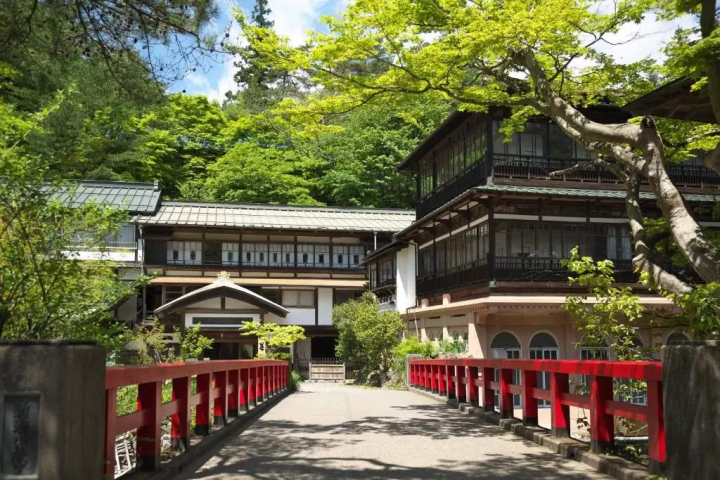
Picture courtesy of Booking.com
Sekizenkan is one of the oldest hot spring inns in Japan, having been founded during the mid-Edo period, boasting a long history of over 300 years. The bathhouse from the Ghibli film "Spirited Away" is said to be based off this ryokan, making it quite famous. The hot spring is located along the Shima River, where you can enjoy Shima no Yu, which is said to have great skin-beautifying effects.
Address: Gunma, Agatsuma, Nakanojo, Shima-ko 4236
Access: 40 minutes by bus from JR Nakanojo Station
Website: Booking.com
2. Gora Kadan
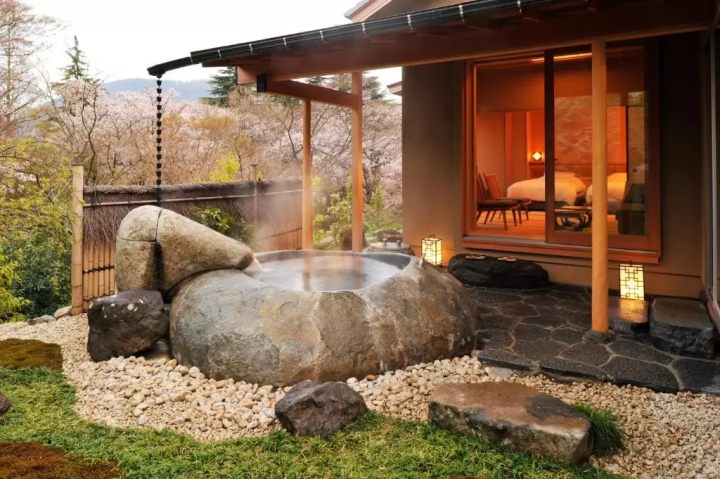
Picture courtesy of Booking.com
Gora Kadan is a ryokan that's housed in a historic building once built as a villa for the imperial family, being a fusion of tradition and luxury. It features a beautiful Japanese garden and an open-air bath, where you can enjoy the beauty of nature no matter which you season you visit. The hot spring water is from Gora Onsen, providing relaxing waters to help heal your body and mind.
Address: Kanagawa, Ashigarashimo, Hakone-machi, Gora 1300
Access: A 5 minute walk from Gora Station on the Hakone Tozan Railway
Website: Booking.com
3. Atami Izusan Karaku
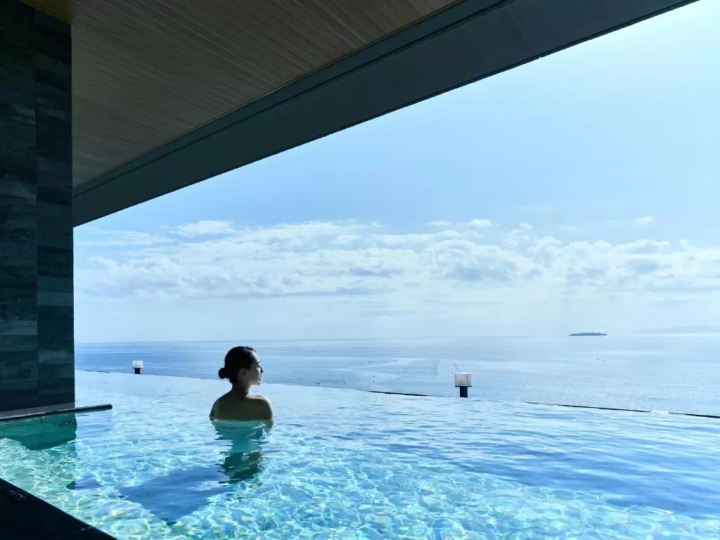
Picture courtesy of Booking.com
At this ryokan, all of its guest rooms come with an open-air hot spring bath, and the rooms on the middle floors and higher have spectacular views of Sagami Bay, allowing you to experience the lush nature Atami and Izuyama have to offer. The ryokan's exterior has a sophisticated yet calming design which harmonizes with the nature, history, and culture of Atami and Izuyama.
About 8 minutes by car from Atami Station you find Izuyama Shrine and the MOA Museum of Art. Popular spots near the city also include Atami Sun Beach, Akao Rose Garden, and Atami Castle. Hatsushima Island is just 30 minutes away by ferry from Atami Port, where you can enjoy various outdoor activities like ziplining.
Address: Shizuoka, Atami, Izuyama 630-1
Access: 7 minutes by car/taxi from Atami Station (hotel shuttles available by reservation)
Website: Booking.com
4. Atami Sekitei
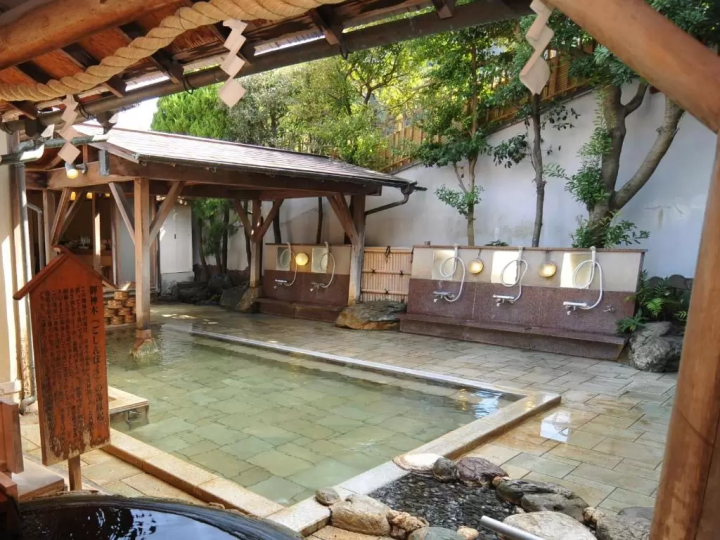
Picture courtesy of Booking.com
Atami Sekitei is a classy inn with a distinctive Sukiya style building, offering an extraordinary space with a beautiful and tranquil garden. Each room comes with an open-air bath, allowing you to enjoy some peace away from the bustling hot spring town. The beauty of the ryokan's architecture, filled with a sense of history, is also one of its great charms.
Address: Shizuoka, Atami, Wadamachi 6-17
Access: 10 minutes by car/taxi from JR Atami Station
Website: Booking.com
5. Nishimuraya Honkan
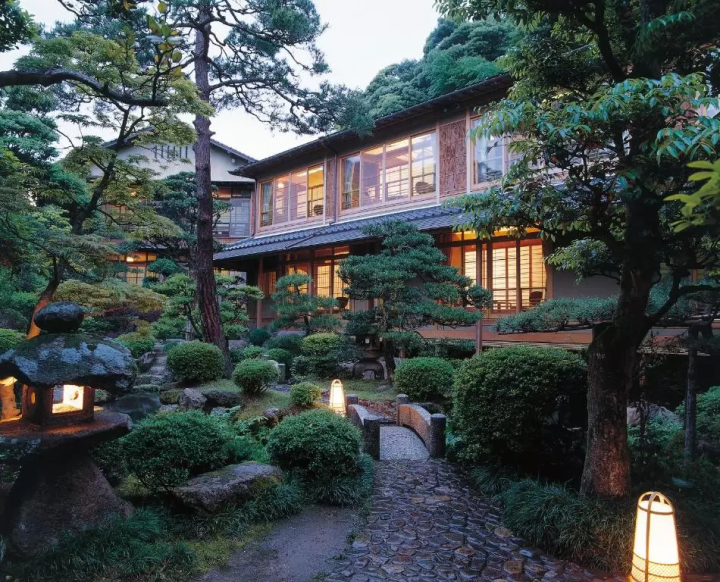
Picture courtesy of Booking.com
Nishimuraya Honkan is a traditional and long-established ryokan, founded over 150 years ago. It is one of Kinosaki Onsen's most representative inns. Along with its beautiful Japanese garden, the ryokan offers you a luxurious stay where you can experience the fantastic hot spring culture which has thrived since the Edo period.
Along with your stay you can also enjoy some traditional kaiseki cuisine, made with the finest seasonal local ingredients.
Address: Hyogo, Toyooka, Kinosaki, Yushima 469
Access: 10 minutes walk from JR Kinosaki Onsen Station
Website: Booking.com
6. Ginka
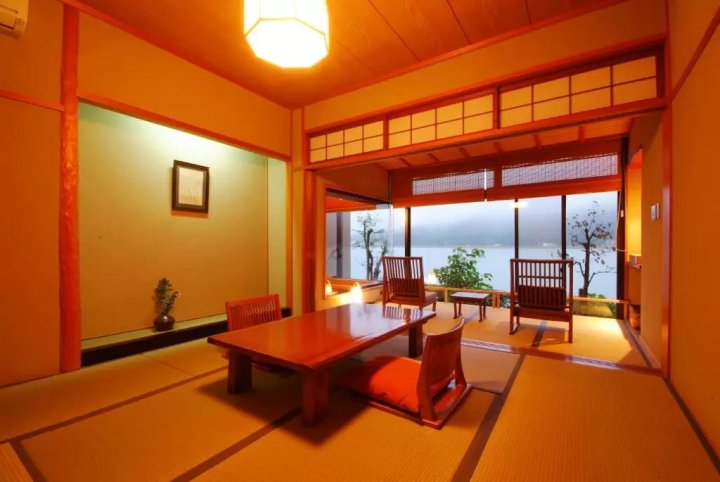
Picture courtesy of Booking.com
Ginka is a luxurious ryokan facility with only 16 rooms spread across its 6,600 square meter site. Their baths have four kinds of natural hot springs, including a cypress bath and an open-air bath that allows you to relax while enjoying a view of the Maruyama River.
Ginka's Japanese restaurant offers visitors a kaiseki meal that lets you experience a taste of fresh nature through the local seafood caught that morning, their marbled A5-grade Tajima beef, and delicious seasonal vegetables.
Address: Hyogo, Toyooka, Kojima 1177
Access: 10 minutes by car/taxi from JR Kinosaki Onsen Station
Website: Booking.com
7. Hana Beppu
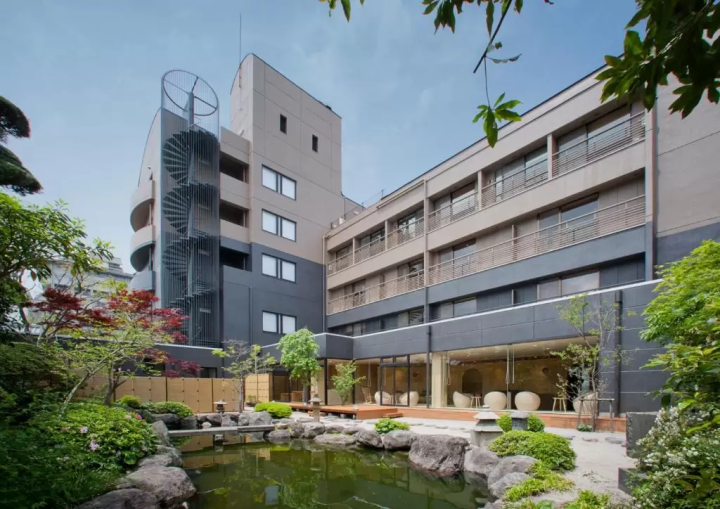
Picture courtesy of Booking.com
Hana Beppu is a ryokan that values their spirit of hospitality, offering their valued customers a simple and beautiful space with a modern Japanese design. You can enjoy Beppu's abundant hot springs and cuisine made with local ingredients at this ryokan, and the relaxing atmosphere will surely give you a sense of comfort.
Address: Oita, Beppu, Uedanoyumachi 16-50
Access: 5 minutes walk from JR Beppu Station
Website: Booking.com
8. Kannawaen
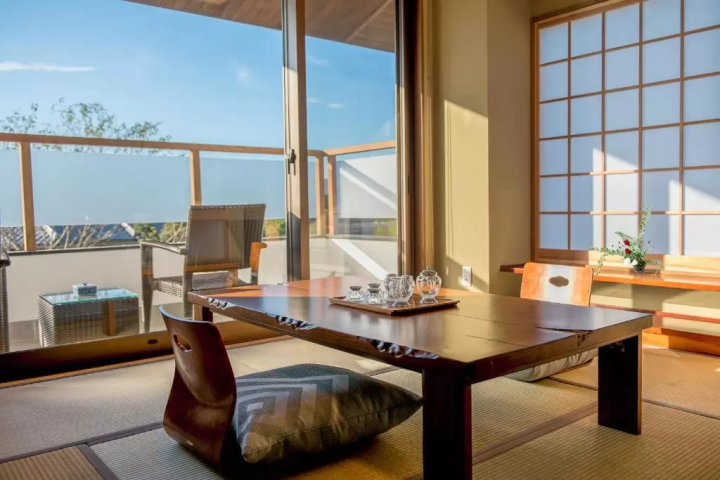
Picture courtesy of Booking.com
Although being an accommodation facility, Kannawaen also features a Noh theater and a thatched teahouse on its premises. The ryokan's garden features two ponds, a historic site which has been designated as a tangible cultural property, and a stone pagoda, allowing you to enjoy a variety of Japanese tradition and nature in a single area.
They have four types of guest rooms: the rooms of the main building that overlooking the Noh theater, the rooms of the one annex where all of their rooms have an open-air breeze, another annex which has rooms in Shinwaen's style, and the "Sora" guest room, which is like experiencing an inn in the sky. Throughout the building there are many pieces of art on display, so why not take some time to explore the halls of this ryokan?
Address: Oita, Beppu, Kannawa 345
Access: About 10 minutes by car/taxi from JR Beppu Station
Website: Booking.com
9. Gekkoju Yufuin
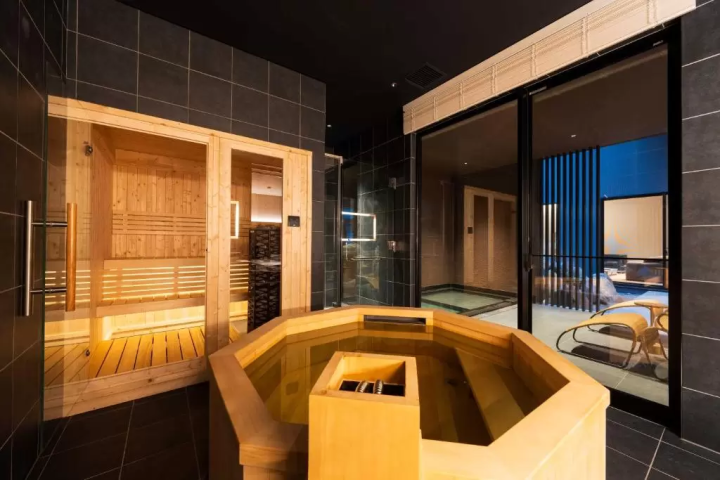
Picture courtesy of Booking.com
Gekkoki is a luxury ryokan that offers private spaces in rooms spread apart. You can enjoy some time in the luxurious open-air baths each room provides, along with the beautiful view of Mt. Yufu in the background.
For dining, you can enjoy kaiseki cuisine prepared with seasonal ingredients. Enjoy a meal while you heal your body and mind surrounded by the relaxing atmosphere the nature provides.
Address: Oita, Yufu, Yufuin, Kawakami 2106-8
Access: 5 minutes by car/taxi from JR Yufuin Station
Website: Booking.com
10. Yufuin Gettouan
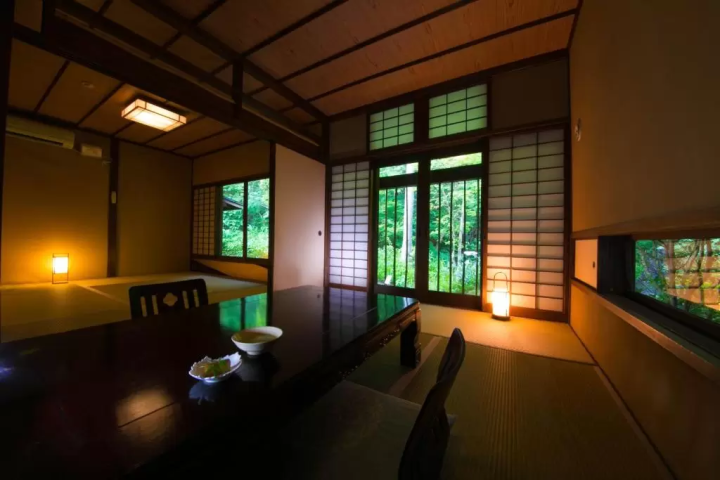
Picture courtesy of Booking.com
Surrounded by tranquil mountains, this luxurious ryokan offers customers chic, Japanese-style rooms with a private open-air bath. The entire property is surrounded by lush greenery, so guests can enjoy the sounds of nature from the nearby river and birds chirping.
Located in a separate building, Yufuin Gettouan's suite rooms feature historic charm with tatami flooring, an open-air bath, and futon bedding. Guests can relax on the terrace or take a relaxing stroll around the large garden.
Address: Oita, Yufu, Yufuincho Kawakami 295-2
Access: 7 minutes by car/taxi from JR Yufuin Station
Website: Booking.com
Enjoy your trip by staying at a ryokan and rejuvenating in an onsen after a full day of sightseeing!
Original article by Mayu
This is a rewrite of an original article published on August the 15, 2016.
This is the official account of MATCHA's editorial department. Our articles feature useful travel information for visitors to Japan, from how-to guides to recommended places to visit.









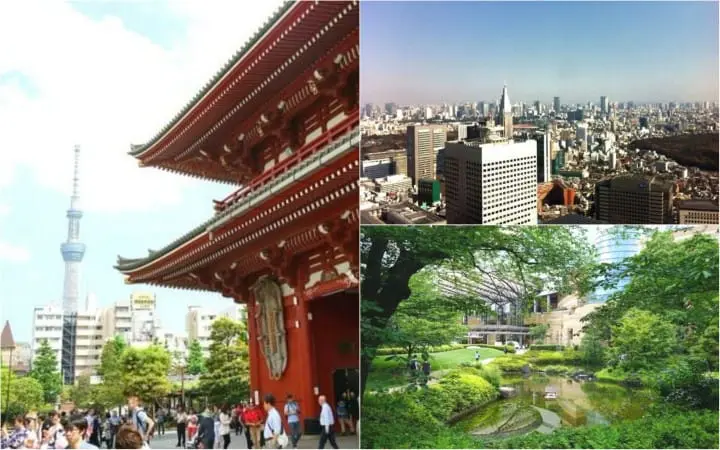




















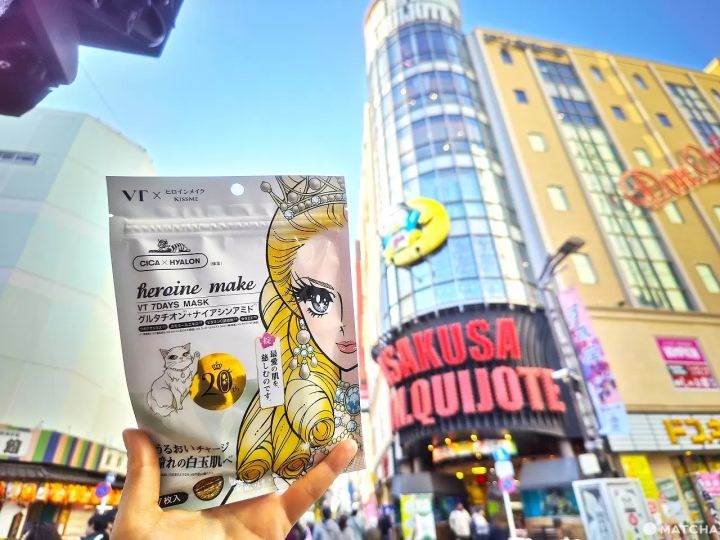

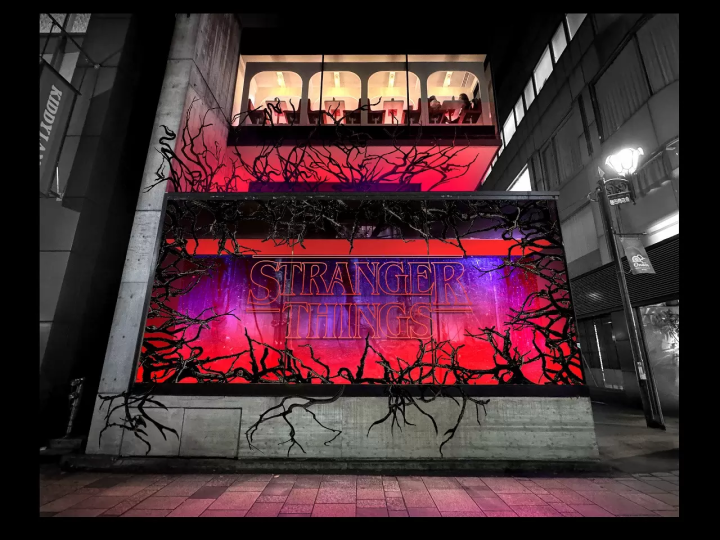
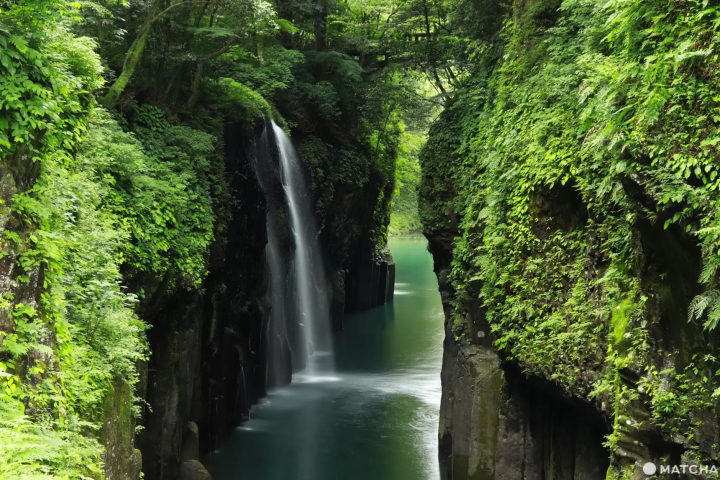




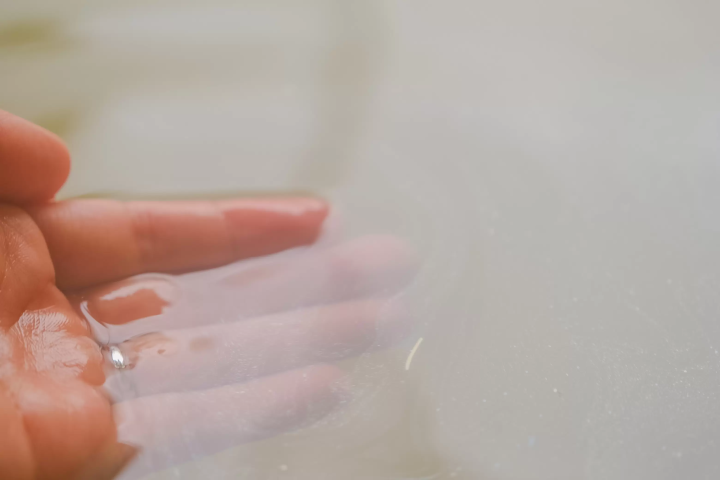


![[Wakayama Guide] Ume and Umeshu (Plum and Plum Wine)](https://resources.matcha-jp.com/resize/720x2000/2025/12/08-252248.webp)
![[2025 Update] From Kansai Airport to Namba - Recommended for travelers with large luggage! Travel comfortably by bus](https://resources.matcha-jp.com/resize/720x2000/2025/10/25-248088.webp)